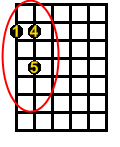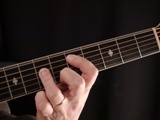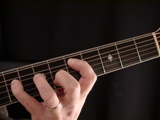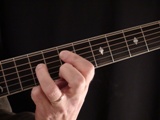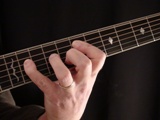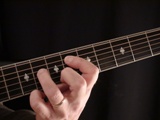Johnny B. Goode
Lesson Goals:
♦ Learn A5, D5 and E5 chords in new positions
♦ Learn the "walk up to the V chord"
♦ Play "Johnny B. Goode" using the Blues Rhythm Riff
Up until now we have been using the "Blues Rhythm Riff' in various blues songs. Now let's take a look at how the riff is used in some rock songs.
In this lesson we will start with an early rock song by the legendary Chuck Berry called Johnny B. Goode.
This song is another example of a 12 bar blues progression, but this time applied to rock & roll.
This is also another I, IV, V chord progression, using the A5, D5 and E5 chords. Because the first chord is an "A" it is safe to assume that the song in the key of "A".
Because we are not playing any open strings on these chords, we will use the exact same fingering pattern as the "B5" chord that we did in the past couple of lessons. The only thing that changes is the "root" note that we start on.
Here is the diagram for the two positions of the A5 chord we will use for this song.
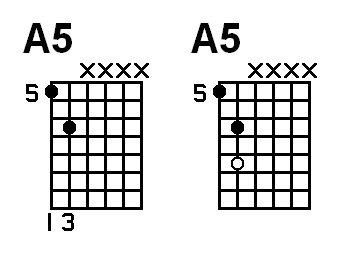
Here is the diagram for the two positions of the D5 chord we will use.

Here is the diagram for the two positions of the E5 chord we will use.
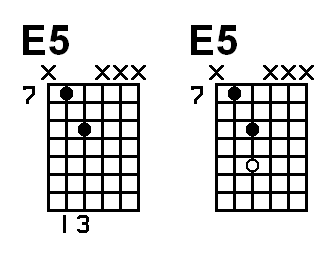
Notice that all three chord patterns are identical. The only difference is that the A5 starts on the 5th fret of the 6th string (A note), the D5 starts on the 5th fret of the 5th string (D note), and the E5 starts on the 7th fret of the 5th string (E note).
That is the beauty of this particular riff, the fingering is exactly the same no matter where you play it!
Now let's take a look at the chart for this song.

At this stage you probably have this one figured out but we will go over it in the video.
Notice the last measure? See the D5, D#5, E5 chords?
This is known as a "walk up", which is when a chord progression starts at one spot and progresses to a higher chord in small steps that are not common to the rest of the progression. The opposite of this is called a "walk down" and we will cover "walk downs" soon.
In this particular "walk up" you will be doing a "walk up to the V chord" (5 chord). The V (5) chord is the "E" chord, which is where the progression resolves. Sonically, the walk up serves as "notice" to the listener that the passage is completed.
Playing this walk up is easy. Just form the 1st position of the D5 chord and play it, then move that same positioning up 1 fret and play that, then move up 1 more fret using the same fingering, to the 1st position of the E5 chord and play that.
Here is the TAB for the walk up.



